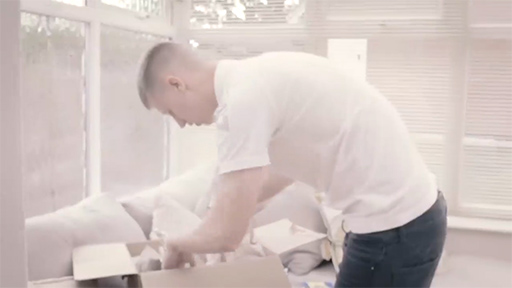3 Upward and downward transitions
As an athlete progresses through their career, upward (progressing to a higher performance level) and downward (moving to a lower performance level) normative transitions are a common feature.
Upward transitions: moving to a higher performance level
One of the key developmental transitions faced by athletes as they progress through their career is the move to higher level competition. It is a natural progression, for example, for an athlete to move from junior to senior level or for higher level athletes to progress from amateur to elite level.
As you touched on in Activity 1 an upward career transition, although positive, can be highly demanding both physiologically and psychologically. In fact, dropout from sport can be common in this period and it is recommended that athletes are prepared for this transition (Pummell and Lavallee, 2019). Box 1 shares some athlete reflections on their experiences of upward transitions in sport. As you can see these athletes experienced both positive and negative responses.
Box _unit5.4.1 Box 1 Reflections on upward transitions
I went from being the big fish in the little pond to the little fish in the big pond and I found that hard to deal with at first. (Hans, swimmer)
The discipline was the hardest thing for me to handle – in the academy everything was so much more relaxed and less serious. (Jackie, rugby player)
I was ready for the move to senior level – I’d achieved everything I could as a junior and was ready for a new challenge. (Jackson, sprinter)
Downward transitions: moving to a lower performance level
Another significant transition is the move downwards in level of competition. This can be caused by a variety of factors such as age related performance decline or deselection. Some of these causes are normative, but some are non-normative. Whatever the cause, it can be a difficult transition for athletes to deal with as they come to terms with the ‘comedown’ in status, the associated performance decrements and perhaps the reduced training intensity.
Downward career transitions, whether they occur early (e.g. deselection) or late in an athlete’s career (e.g. age related decline), bring with them several psychological challenges. Box 2 gives some examples of athletes’ reflections on their experiences of downward transition. These athletes experienced different frustrations at the move. You will also examine another example in the next activity.
Box _unit5.4.2 Box 2 Reflections on downward transitions
After moving from a professional football team to a semi-professional team I found it hard to adjust to the ‘unprofessional’ attitude of the other players. I was used to watching what I eat and staying in the night before a match, but these guys saw nothing wrong with partying the night before a match. (Zach, footballer)
I found that I became almost embarrassed of the times I was running. When I got to the end of the race, I felt like making an announcement to everyone in the race and everyone watching so that they knew how good I used to be! (Priti, middle distance runner)
I found it very frustrating dealing with the lower levels of coaching and officiating and I ended up not having a lot of faith in my coach. (Sonya, volleyball player)
Activity _unit5.4.1 Activity 3 Downward transitions
Watch the video below which explores the experiences of a group of young football players who have been dropped from their professional clubs. If these players continue to play football, they are likely to play at a lower level. Reflect on some of the responses the boys expressed to being dropped and then some of the challenges you think these players might face during this downward transition.

Transcript: Video 2
Discussion
All the players featured in the clip have experienced a setback that will possibly lead them to playing at a lower level. In response to the initial news of being dropped, all three players expressed a fear of the unknown and concerns about what they were going to do next. One player described being shocked at the decision, indicating that for him this was a non-normative transition. If they move on to playing at a lower level − depending on what they move on to − they may experience several challenges such as coming to terms with not being able to play full time and the financial and emotional implications of this. They may also experience feelings of frustration with the lower level of coaching or with the attitude of other players.
In the video, the young footballers were forced to deal with a downward transition quite early on in their careers. However, the move downwards in competitive level can often be thought of as a developmental process as an individual’s career progresses and perhaps the final stages of an athlete’s sporting career before retirement. The decision of when to retire can be a difficult one as you will learn in Session 7 of this course.
